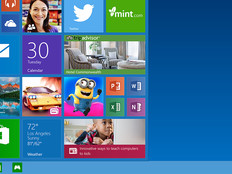What Your Cloud Migration Plan Needs to Succeed
IT decision-makers leading data center modernization initiatives should plan on engaging in a multi-stage process that includes:
Business-centric Needs Assessment
IT staff should work closely with business leadership to understand how they perceive IT and what they’d like to see change. “It’s very important to engage the business, so that investments in the data center closely align with the company’s strategic priorities,” says CDW Cloud Client Executive Tracy David. These priorities can include deeper market insight, more informed decision-making and faster time to market for products and services.
Technical Workload Inventory
Some workloads are closely tied to Microsoft Windows Server 2003. Others are more platform-independent — and therefore more readily moved to Microsoft Windows Server 2012 or a cloud environment. Some application vendors may even offer incentives for moving existing on-premises applications to a Software as a Service model. An inventory of current IT workloads will provide a clear picture of the task.
Cloud Provisioning Evaluations
IT decision-makers should undertake a comprehensive evaluation of alternative cloud solutions. These solutions should be evaluated with a weighted scorecard for attributes such as cost, ease of deployment, ease of management, security and transportability of workloads.
Staged Migration
Once target cloud environments have been identified, workloads can be migrated sequentially based on either business urgency or technical ease. “Development and disaster recovery are often good initial candidates for migration, because they don’t disrupt the production environment,” notes independent IT consultant Anil Desai.
Operations and Learning
IT staff should be prepared to monitor outcomes and gain new hands-on insights as workloads are migrated to their new target environments. “Service assurance can be very challenging in the cloud, because the virtual resources that support any given workload are constantly in flux,” observes Kevin Gray, senior manager within EMC’s Emerging Technology Division. “It’s important to closely track costs too, since they can be highly variable in the cloud, and IT managers want to make sure they stay aligned with actual business needs.”









